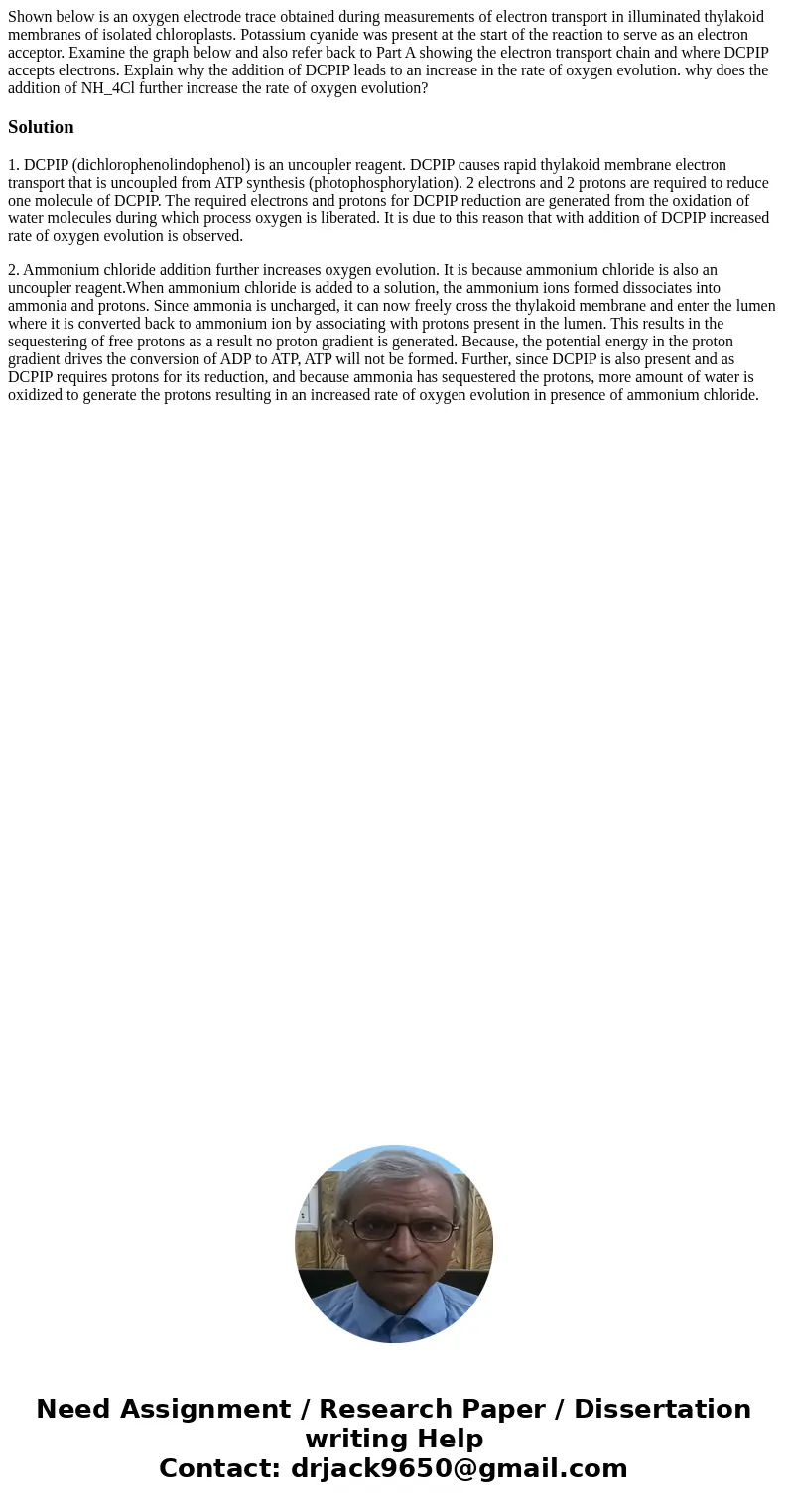Shown below is an oxygen electrode trace obtained during mea
Solution
1. DCPIP (dichlorophenolindophenol) is an uncoupler reagent. DCPIP causes rapid thylakoid membrane electron transport that is uncoupled from ATP synthesis (photophosphorylation). 2 electrons and 2 protons are required to reduce one molecule of DCPIP. The required electrons and protons for DCPIP reduction are generated from the oxidation of water molecules during which process oxygen is liberated. It is due to this reason that with addition of DCPIP increased rate of oxygen evolution is observed.
2. Ammonium chloride addition further increases oxygen evolution. It is because ammonium chloride is also an uncoupler reagent.When ammonium chloride is added to a solution, the ammonium ions formed dissociates into ammonia and protons. Since ammonia is uncharged, it can now freely cross the thylakoid membrane and enter the lumen where it is converted back to ammonium ion by associating with protons present in the lumen. This results in the sequestering of free protons as a result no proton gradient is generated. Because, the potential energy in the proton gradient drives the conversion of ADP to ATP, ATP will not be formed. Further, since DCPIP is also present and as DCPIP requires protons for its reduction, and because ammonia has sequestered the protons, more amount of water is oxidized to generate the protons resulting in an increased rate of oxygen evolution in presence of ammonium chloride.

 Homework Sourse
Homework Sourse